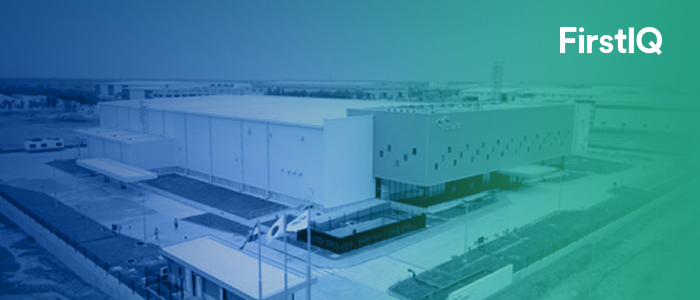Can India Become the Global Engine for Affordable Cancer Innovation?

As the world scrambles to balance cutting edge oncology with cost and access, India may become the market that shows how it’s done. With rising domestic burden, accelerating investments, and unmatched generics strength, India is quietly building one of the world’s most compelling oncology ecosystems. But turning potential into leadership will require more than expansion, it demands ecosystem level coordination, smarter pricing models and policy driven innovation.
India’s oncology footprint: From volume to value
India accounts for only a small fraction of global oncology infrastructure, yet it produces a significant share of generic cancer drugs. A striking example came in July 2024, when Zydus Lifesciences launched IBYRA, a locally manufactured version of Olaparib, a targeted oral therapy used to treat ovarian and breast cancers driven by BRCA mutations. By offering a lower cost alternative to imported PARP inhibitors, Zydus has expanded access to a drug class that was previously out of reach for many Indian patients, underscoring India’s emerging role in affordable medicine.
What’s fueling India’s oncology momentum?
Cancer incidence in India continues to rise, exposing gaps in both access and affordability. That context underpins voiced pressure from industry leaders to improve affordability:
Affordability push: Kiran Mazumdar Shaw, Biocon chairperson, told Reuters in January 2025:
“All cancer related drugs are expensive. Any drug for chronic therapy with a monthly cost of treatment exceeding 5,000 rupees should also be exempted from tax.”
To which the government is responding by policy shifts: The Union Budget 2024/2025 in India exempted three major oncology drugs: Trastuzumab deruxtecan, Osimertinib, and durvalumab from customs duty, a move welcomed by pharma leaders as a sign of deeper support for access driven oncology.
Big pharma bets on India: India’s oncology future is not just generics led. Global and domestic players are placing bold bets on high end innovation:
Sun Pharmaceutical Industries made headlines in March 2025 by acquiring U.S. based Checkpoint Therapeutics for USD 355 Million. This adds the FDA approved skin cancer immunotherapy UNLOXCYT to Sun pharma’s oncology portfolio, thus expanding India’s position in the oncology share.
Bristol Myers Squibb (BMS) is doubling down on India with a USD 100 million investment to establish its largest R&D center outside the U.S. Announced by CEO Christopher Boerner in May 2024, the upcoming Hyderabad facility will serve as a global innovation hub, with a sharp focus on AI-powered oncology and hematology trials. Slated for completion by 2025, the center underscores BMS’s commitment to leveraging India’s scientific talent and digital strength to accelerate cancer research and development.
Glenmark Pharmaceuticals innovation arm, Ichnos Glenmark Innovation, entered an exclusive licensing deal with AbbVie in July 2025 for its experimental therapy ISB-2001, aimed at multiple myeloma. The deal includes upfront payments of USD 700 million and up to 1.22 billion in milestones, underlining India’s rising role in oncology innovation.
Workforce and tech investment: Multinationals are scaling local talent fast. At BioAsia 2025, Merck (MSD India) Executive Vice President Dave Williams announced his plans to double its India workforce with a sharp focus on oncology sector in Hyderabad. He stated “By the end of this year, we expect to have roughly 2,700 employees, and in a couple of years, I fully expect we’ll double that number or more, focusing on oncology and digital innovation in Hyderabad.”
This influx is turning Hyderabad and Gujarat into next generation oncology innovation clusters!
The friction: Why is market access still a bottleneck?
India remains the world’s largest producer of generics, fulfilling over 20% of global demand including significant cancer drugs. However, launching high cost cancer therapies in India’s price sensitive market remains risky, even when clinically validated.
A sobering case of such instance include: In April 2025, AstraZeneca Pharma India recently surrendered marketing authorization for its prostate cancer drug Olaparib (Lynparza), underscoring the difficulty of launching high cost therapeutics in price sensitive markets.
Now why did AstraZeneca have to surrender its marketing authorization rights?
Metastatic prostate cancer in India features a narrow target population, especially for specific approved indication. Introducing a high cost therapy for a limited patient base pose significant uncertainty about whether revenue would justify investment in supply chain, physicians outreach, and patient access programs.
Unlike western markets, India does not have widespread insurance or government reimbursement for expensive oncology agents. Patients overwhelmingly bear treatment costs out of pocket, making uptake of high priced drugs very low unless priced aggressively or subsidized.
Such examples reflect a broader truth: scientific success alone doesn’t ensure market viability in India!
The white space: So where’s the opportunity?
India doesn’t need to just manufacture drugs. It needs to design scalable models for precision cancer care that work in resource constrained markets.
Here’s how to capture that white space:
Precision meets affordability: Startups and generics firm should invest in biosimilars and hybrid biologics priced 50-70% below imported benchmarks.
Trial testbeds: Hyderabad, Ahmedabad and Bengaluru can serve as clinical trial testbeds for next generation therapeutics, backed by strong pharma hubs, biotech ecosystems and policy support.
Value based pricing and risk sharing: Insurers and pharma companies should pilot outcomes linked pricing for oncology. If survival benchmarks aren’t met, patients or payers get rebates, thus sharing risk and improving access.
A global oncology hub in the making:
India’s oncology drug sector is no longer just a generics engine, it is becoming a strategic hub for innovation, investment and global partnerships. With a growing burden, improving regulatory support, and ambitious moves from both domestic players like Sun Pharma and Glenmark, and multinationals like BMS and Merck, the ecosystem is primed for evolution. But the case of AstraZeneca’s Olaparib withdrawal serves as a sharp reminder that without affordability, even the most advanced therapies can falter in market access. For India to sustain its global rise in oncology, commercial models must evolve in tandem with scientific progress, balancing innovation with equitable reach!




